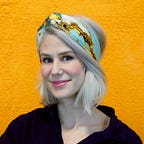The Power of Habits: Understanding the Influence of Environment on Your Behaviour
Your brain is tricking you: How your habits make you think you want things you don’t actually want and what to do about it.
Do you ever find yourself asking “why did I do that?” after you have had a glass of wine, smoked a cigarette, scrolled on your phone or done something else habitual.
Or have you ever wondered why you crave things that aren’t good for you?
This blog will tell you:
- The most simple answer to why we crave things that are bad for us and that we thought we should be able to quit easily, and why we often reach for things that don’t leave us feeling good.
- 1 thing you can do about it today.
Why would we choose to do something we don’t want?
The answers to this question are complex. For example, sometimes we crave things we shouldn’t as they feel rebellious, or in need of a bit of drama to insert a bit of fun into our otherwise boring day, and sometimes it’s because we are self sabotaging our chances at happiness.
But, sometimes the reason is very simple:
OUR HABITS MAKE US THINK WE WANT THINGS WHEN WE DON’T.
OUR HABITS CAN GIVE US CRAVINGS AND URGES THAT WE DON’T CHOOSE BUT THAT WE THINK WE DO.
Let me tell you a little story…
A few weeks ago I did an interview with The Times and I have to tell you about the epiphany moment the journalist had while we were chatting.
We were talking about habits and all the things that get us stuck, she said…
“So hang on… if habits are triggered by cues in our environment, and more specifically if those cues trigger the urge to engage in our habits, does this mean we sometimes have cravings for things we don’t actually want?”
I smiled.
She had truly grasped the nature of habit. Habit loops follow the pattern of cue (you see something or feel something), urge (the feeling of craving something), habitual action, and resolution (the task is complete, you remove a craving or gain some kind of reward).
This means we can get cravings for things that we may not actually want, and that our habits can make us think we want things that we don’t want at all.
If this sounds a little vague… have you ever thought… “ooh, I’d love a glass of wine” and then having had a glass, felt pleased and sure you had chosen it of your own volition?
If so, maybe you really did want that glass of wine. Or…
Maybe you saw a bottle of wine and simply seeing it created a craving, which you experienced as your own urge.
You thought “Ooh I’d love a glass” assuming this thought came from your own desires when in fact, it might have simply been a biological response to the thing you saw in your environment.
I’m not trying to freak you out. Most of the time you do have autonomy, you aren’t a puppet on strings constantly guided by someone else’s hands. However, when it comes to habits we can easily slip into autopilot.
How to Break Free from Habit-Driven Desires You Don’t Really Need
Once we get savvy to how much of an effect our environment plays in our daily behaviours, we have an incredibly important key to habit change.
We can stop relying on willpower, choosing instead to set up our environment for success. I.e. by removing the old visual cues, such as the bottles of wine that trigger our habit loops.
ACTION STEP 1: Remove all visual cues associated with the action you want to quit.
We can see that mindful awareness is important as it gives us the ability to pause and observe our reactions and cravings, giving us time to say… “but do I really want that thing?” before we choose how we want to respond.
ACTION STEP 2: Choose between starting a mindfulness practice or simply asking yourself at multiple points throughout the day, “ Am I doing what I want to be doing”.
And we can cut ourselves some slack. Recognising that much of the time when we slip back into our old ways it isn’t because we are weak-willed or because change isn’t possible for us. It is because deeply ingrained habits can be triggered by our environment, meaning that sometimes the old habit will pop up BEFORE we have a chance to stop it.
If you want to break old habits and set up new ones… please don’t see setbacks as a sign change isn’t for you. Learn about the science of habit, and how to overcome whatever keeps you stuck… and I promise you, change will come.
ACTION STEP 3: Catch your inner critic and instead say “I know I don’t like this behaviour. I will stop it one day, but breaking habits is hard. I’m learning what I need to do and I am going to be kind to myself while I put these steps into practice. Slipping back into my old ways is not a sign of failure, it is a learning point”.
That’s all for now.
This is a starting point to get you truly understanding how habits work and how they can affect each of us.
Practise these steps over and over in order to make change possible for you.
If you want to do a deep dive, which will help you not only break bad habits but also:
- stop self sabotage and the drama in your life
- end intergenerational patterns,
- improve your decision making
GRAB A COPY OF MY NEW BOOK ‘(UN)STUCK: 5 STEPS TO BREAK BAD HABITS AND GET OUT OF YOUR OWN WAY!
Outside the UK? Get FREE Worldwide delivery here
Also, connect with me on Instagram for daily posts to help boost your mood.
